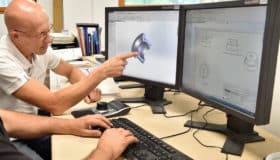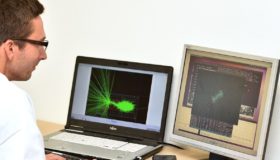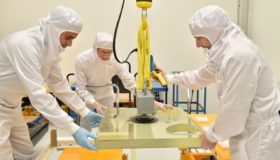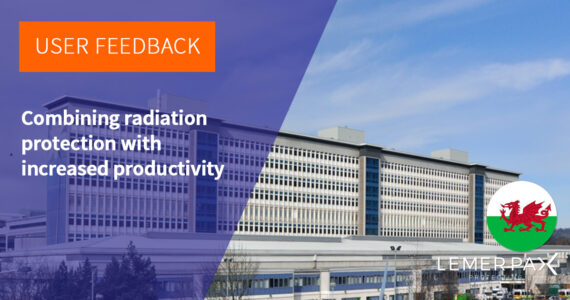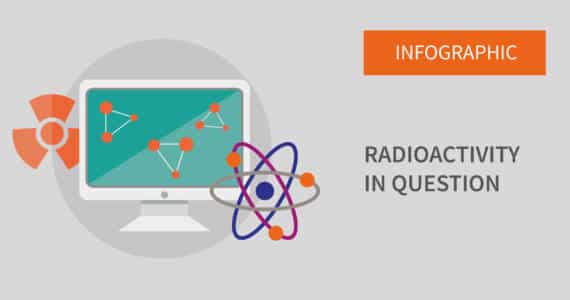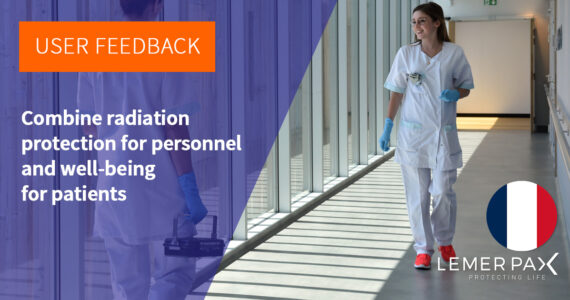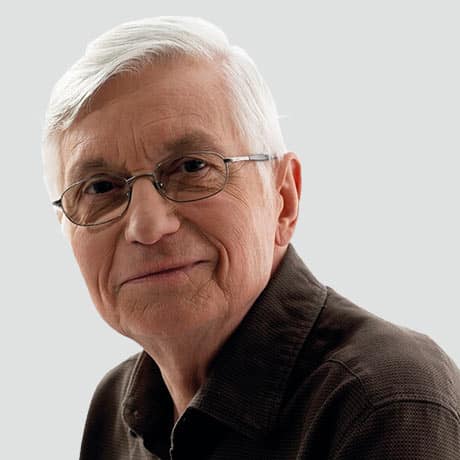
3 questions to Jean-François Chatal, pioneer of Nuclear Medicine in France
Professor Jean-François Chatal is former director of the nuclear medicine department at Nantes University Hospital, as well as the city’s Cancer Centre. He and his team were responsible for the installation of a high energy/high intensity cyclotron known as Aronax, used to produce innovative radioisotopes for nuclear medicine. In 2013 Jean-François Chatal was awarded the Antoine Béclère Medal for his contribution to the development of nuclear medicine.
What was it like being involved with the early days of nuclear medicine in Nantes?
Jean-François Chatal: In the early 70s we were all feeling optimistic. The possibilities were seemingly endless. Nuclear medicine was still a recent invention: it first emerged in Nantes in 1962, and I got involved in 1969. But it hasn’t always been an easy ride. In the 1990s the wave broke and we all became rather pessimistic: we though the whole field was doomed. Why? The rise of scanners and ultrasounds, and then the arrival of MRI scans on the scene, all raised questions about the long-term future of nuclear medicine. I was worried that it would disappear altogether. At the time we were focused almost exclusively on diagnostic tasks, with cardiac and bone gamma scans accounting for 98% of our work. In the meantime, I had become fascinated by a form of therapy which seemed to offer a new field for experimentation, but at this time was still in its infancy. In 1975 I set up a small research unit working on nuclear cancer treatments. It was the year that monoclonal antibodies were discovered, and we were looking at using antibodies for targeted cancer treatment. And then, as if by miracle, salvation arrived in the form of the PET scan (Positron-emission tomography). Not many people believed in it to begin with, but PET soon proved itself in the treatment of lymphoma. In fact it was so effective that, when combined with scans and MRIs, the PET scan and PET MRI soon became the benchmark for scanning in cancer treatment.
And how do you see nuclear medicine developing in the future?
Jean-François Chatal: There’s a question which I can’t answer: what’s going to happen to positron emission systems with regard to Technetium? 99mTc is the most widely used radioactive isotope in the world for gamma scans. In 2017 we performed over a million gamma scans in France using technetium, eight million in Europe, over thirty million in the world. There are 4 times more SPECT cameras than PET cameras. In the USA the use of technetium has dropped off somewhat, and we’ve seen a slow increase in the use of PET scans. What does the future hold? I’m convinced that PET will continue to develop gain ground. It can deliver results which are better than even the latest CZT cameras. In an ideal world, the most reasonable solution would be for the two technologies to coexist. But I still think that PET is going to become the dominant force. The number of new molecules being developed for PET is much bigger than the number of technetium-based molecules! Will that be enough? I don’t know, but in my opinion therapy is the future of nuclear medicine. That’s not just an off the cuff prediction, there are good industrial and commercial reasons for thinking this will be the case. I’m thinking in particular of the fact that Bayer recently bought out oncology specialists Algeta to get their hands on Xofigo, and Novartis acquired Advanced Accelerator Applications (AAA) for their neuroendocrinal tumour treatment, and of course Novartis also bought Endocyte, with their targeted prostate treatment. And then of course there’s Atlab Pharma, which I know well because I set it up in 2008 with Jean-Marc le Doussal and Jacques Barbet. The company was sold to Australian lab Telix Pharmaceuticals on 11th September this year. At the time we had exclusive rights to the use of antibody J591, developed by Neil Bander’s team at Cornell University in New York. And although all of the clinical trials were conducted in the USA, we were able to have a certain input in the indications process, with excellent results. Neil’s team had a real wealth of experience in clinical development for urological oncology. They developed the first series of monoclonal antibodies targeting prostate specific membrane antigen (PSMA). It is largely thanks to Neil Bander’s work that PSMA is now recognised as the cell surface antigen most typical of prostate cancer, making it a subject of significant interest in the academic and biopharmaceutical fields. I think we’ll be seeing the end of chemotherapy for this indication before too long. Radio-immunotherapy is now a very credible alternative. Better still, I have high hopes for a new category of radioisotopes fabricated by Arronax: alpha emitters. These days big pharma isn’t interested in diagnostics, they’re focused on therapy, and alpha therapy in particular. Here in Nantes we’re preparing our first alpha therapy study using an alpha emitter which will be produced by Arronax. Is alpha therapy the future in terms of treating residual conditions? In Nantes, we’ve already demonstrated that alpha particles can be much more effective than the electrons used in molecular radiotherapy, when it comes to destroying isolated tumour cells. Will the technique become widely used?. I don’t know. But we certainly believe that the future lies in combining molecular radiotherapy, alpha or beta, with immunotherapy. Because we already know the potential for synergy with immunotherapy, which becomes more effective after treatment with ionising radiation, either by external radiotherapy or molecular radiotherapy.
Is Nantes on the nuclear medicine map?
Jean-François Chatal: I’d say yes! Very much so. Nantes is on the map because all the world’s specialists came to visit Arronax, our high-energy 70MeV cyclotron, which was the most powerful cyclotron in the world when it was first installed. It’s even spawned three offshoots in Indianapolis, Moscow and Arizona, supplied by Belgian firm IBA. Along with a few friends, I founded Naogen Pharma to commercialise production of Strontium-82. My hope is for the company to become the heart of a thriving radiopharmaceutical hub in the Basse-Loire region. That’s why my Nantes-based colleagues and I are, so grateful to Jean-Luc Harousseau, an internationally-renowned haematologist and former president of the Pays de la Loire region, for his support in getting the Arronax cyclotron project off the ground, allowing us to produce innovative radioisotopes for nuclear medicine. Right now the priority is to consolidate our business and get everybody on board. I’ve stepped back from academia to enter the world of business: it’s a different kind of pressure. We’re currently seeking financial backing for clinical trials, an extraordinary situation really when you think that Rubidium has been in use in the USA since the 1990s. Tens of thousands of cases have been studied, and everybody knows that rubidium is more effective than technetium. But in Europe, you need a European study to prove that. In order to boost our standing and expand our portfolio, we have also come up with a second product – an antibody with an Astate 211 marker, allowing us to conduct an initial alpha therapy study and establish proof of concept for this new treatment. So we’ll soon be creating a spin-off from Naogen to focus on this new product. After 40 years in academia, I’m finally discovering the world of business. It’s not always plain sailing, but I’m still as excited as ever about nuclear medicine and the therapeutic possibilities it offers for patients.
